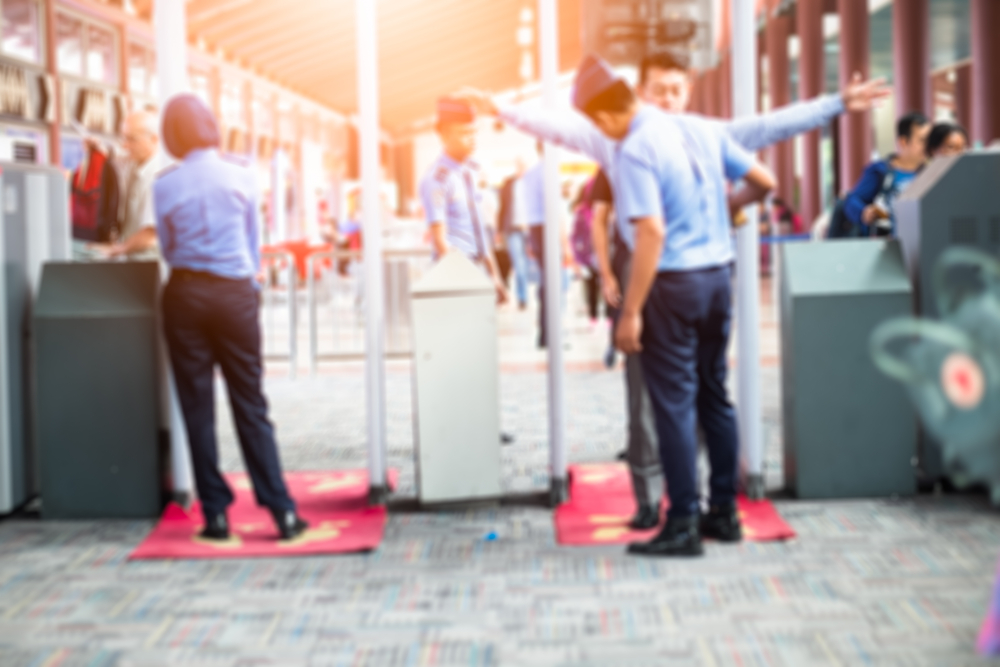
Members of the House Homeland Security Committee pressed David Pekoske, the newly confirmed administrator of the Transportation Security Administration (TSA), on how quickly the country could integrate computed tomography (CT) scanners into every airport in the country to thwart threats at a committee hearing on Wednesday.
The committee hearing that focused on the TSA’s role in keeping the United States secure comes after a classified security briefing that identified the vulnerabilities to the nation’s aviation system that concerned committee members.
Committee Chairman Michael McCaul (R-TX) said the briefing was a reminder that threats are still real and that the aviation sector was the “crown jewel of terrorist targets.” The latest threats, he said, were terrorists using electronic devices and laptops as bombs, and exploding the device on an airplane while the plane is in flight.
“We did just have a briefing from the inspector general … he identified vulnerabilities in covert testing,” McCaul said. “These are vulnerabilities that every member at the briefing found disturbing. I think there are things that we can do today without waiting. I don’t think that the American people can afford to wait to for their own safety.”
Pekoske said an important factor in improving global aviation security is investing in and leveraging new and emerging technologies for screening purposes. The TSA is exploring the use of 3D-imaging CT systems to meet emerging and evolving threats at airport checkpoints.
“These systems offer a more enhanced imaging platform over legacy AT X-ray systems and are a proven technology that has been used for screening checked baggage,” Pekoske testified. “I believe that computed tomography will enhance carry-on screening for the current threats and improve overall checkpoint security effectiveness and efficiency.”
Pekoske also said the TSA recently collaborated with the U.S. Customs and Border Protection on their biometric fingerprint reading technology pilot for identity verification of travelers exiting the country. Supporting that pilot program is important, he said, adding that, “… the intent of these efforts is to move TSA forward in the ability to verify passengers’ identity, ticketing, and vetting status.”
McCaul agreed the TSA must focus its efforts on advanced technology in screening passengers – using systems like facial recognition, CT scanning, and biometric screening.
McCaul asked Pekoske how soon CT scanning could be deployed in all airports in the United States, and particularly the 10 last-point-of-departure airports identified as the highest risk airports.
Pekoske said the technology was already in place in the checked bag system, and was being prototyped for passenger screening in two airports – Phoenix, Arizona, and Boston, Massachusetts.
“Hypothetically, we could deploy that technology throughout the system now because the technology exists,” Pekoske said. “What would happen would be an improvement in the operator’s ability to see the images … however, we aren’t at the point yet where we can get the throughput with the computer tomography machines that we have with the current machines.”
He estimated that it could be several months before the system could be put in place.
Rep. Bennie Thompson (D-MS), ranking member of the committee, said the time it takes to implement new technology was a concern of the committee, especially when the technology was already being implemented in other countries.
Rep. Bill Keating (D-MA) questioned Pekoske on his use of the word “hypothetically.”
Pekoske responded that the issue preventing the agency from implementing CT scanning right away is funding, and that integration of the CT scanning system throughout the nation’s airports required more money than was currently in the TSA budget.
Keating pointed out that the proposed Trump administration budget for fiscal year 2018 took money from the TSA’s budget to pay down the deficit.
“The public, I don’t know if they’re aware of it, they’re surcharged a certain amount of money and $1.28 billion has been pulled back, from what the public gives, for deficit reduction,” Keating said. “We could be safer clearly because of technology, safer in your opinion, and we’re not doing it because of money. But we’re taking away passenger funded money and the President’s budget takes away money … We have the funds available if we have $10 billion or more to build a wall.”
Committee members also asked Pekoske to look into tougher employee screening, and to improve morale for TSA employees. McCaul noted in his opening remarks that in 2015, the committee learned through leaked reports from the Department of Homeland Security Inspector General that TSA’s passenger screening record was “abysmal.”
Pekoske said he was looking into 100 percent employee screening programs as well as working to provide the agency’s 60,000 employees with the training they needed, as well as career maps that provided employees with pathways to promotion as a way to improve morale, and to keep attrition low.




